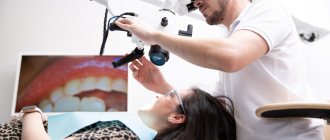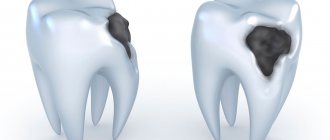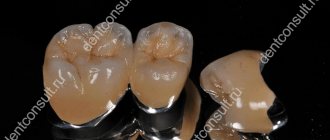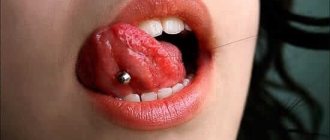It would seem that installing an implant is an operation that could not be simpler, just take and screw a screw into the jaw. Then you start to consider the cost structure and it becomes clear that you need a radiologist, a surgeon, two assistants - and the time of these people costs money, especially a surgeon who has studied and practiced for ten years, and he has liability to you, including possible criminal liability, for mistakes. We need an operating room, we need sterile gowns, disinfection, we need to invest in equipment, we need consumables. Moreover, all this must be certified. At the pharmacy, chlorhexidine costs 11 rubles, and an analogue certified for dentistry will cost a couple of orders of magnitude more. A practical example is a gel with orthophosphoric acid, which is simply cheap to produce. But when it has been certified for four years, one syringe with it starts to cost from 1000 rubles. Moreover, it still needs to be found, because some materials are simply not supplied to Russia, because the manufacturer will not even be able to get certification after a couple of years of sales. Adequate people do not agree to Russian implants, but those that will be supported in 20 years are European - they have this guarantee included in the price.
In general, medicine is a pretty expensive thing in general. The average citizen of Russia pays, roughly speaking, 40 thousand rubles a year only for compulsory medical insurance (in the form of deductions from salary) - and for this he receives an extremely cheap service based on many things, the prices of which are kept low with the help of the federal antimonopoly service and subsidies. But as soon as we talk about something even a little non-massive, everything becomes more interesting.
But I think this still does not explain why dental treatment can cost in some cases a million, and not a hundred thousand. Let's take a closer look.
Approximate cost structure
Dental expenses:
- Rent of premises (direct treatment room, area for equipment, reception).
- Salary of a doctor, assistant and clinic administrator. In “White Rainbow” we simply don’t have random doctors - we are looking for the best on the market. And at the same time, their working day is not 8 or 12 hours, but from 8 to 15 and from 15 to 22 - when the clinic is open from 8 to 22. Because this is the optimal time when the doctor is fresh.
- Disposal of waste (gloves, patient organs).
- Equipment (purchase and maintenance, spare parts). The same tomograph costs 5 million, and it is basic for most diagnostics.
- Consumables (for example, implant). Here it must also be said that we buy a lot of things for dollars or euros with conversion into rubles, so in the outside world everything is becoming more expensive. The same implants, for example, are produced in the Russian Federation. But there is not a sufficient evidence base for us to look into the patient’s eyes and say: “Here, I’ll give you Russian implantation now, everything will be fine.”
- Compliance with sanitary and epidemiological regulations, starting from the correct sterilization of all instruments and ending with surgical protocols, including isolation. The same good keratotome (scalpel) is used in ophthalmology to cut off a piece of your eye, and in our case it is used for one cut during surgery. A unit costs approximately 1,500 rubles, and after three seconds it goes into the trash bin. Moreover, this is biological waste, there is blood on it.
- Training of specialists. In addition to regular courses, we have video recording of procedures, photographic recording (which is uploaded to you immediately) and all examinations and surveys conducted by phone. That is, doctors regularly cross-review each other, and at the end of the month and quarter they hold retrospectives to compile statistics. And if it is not an order of magnitude lower than the usual level of complications around the world in the same cases, it means that either the doctor is doing something wrong or choosing the wrong methods.
- Modern protocols (the same high-tech) - for example, when we place an implant, we always use a navigation template. That is, we carry out several diagnostic procedures to obtain both a 3D model of the oral cavity using an intraoral scanner and the location of the blood vessels and bones using tomography. Then we design the implant in special software, make sure that the crown on it will fit perfectly in the project, and then create a navigation template for the surgeon so that the cutter does not deviate by a degree or a tenth of a millimeter - and will not damage either tissue or nerves . As a result, the percentage of complications is lower, and the service life of the implant is significantly longer - as a rule, forever for an individual human individual. Navigation surgery alone requires both a 3D printer right in the clinic and a person who will work with it.
Let's look at implantation (tooth replacement), a rather expensive procedure.
The screw itself costs 5–10 thousand rubles. 5 - good, 10 - excellent. This is money for the fact that it is well thought out and that there will be spare parts for this screw in 20 years - otherwise we had a case when a patient needed five units for old, old implants that were no longer supported, and we called out to our colleagues’ clinics , we found four around the world, but the fifth still had to be solved creatively. To install an implant, you need a physiodispenser; this is a device that rotates the instrument with the required force to install the implant into the bone. You can turn it with pliers, or you can turn it with this device from 150 thousand to 1.5 million. Another set costs about 2 thousand euros, which contains all sorts of connectors for this implant. Yes, when you buy hundreds of implants, they give you this set for the clinic. But we have many clinics, and each one needs two sets, because they are rotated: while one is being sterilized, the other is in work. There are also two dispensers per clinic: only their motor is not sterilized. We also need tips for proper operation, of different types, attachments for piezosurgery. We need a warehouse of spare parts, for example, special screwdrivers. For all this to work, you need navigation, I wrote about it above. And a scanner. The last scanner cost 45 thousand euros. Then you need a temporary overlay - a CNC router, a mill in the jargon. The mill costs another 35 thousand euros. And a person who knows how to manage it. Plus a temporary crown from a 3D printer (and its installation) - it turns out that one correctly made new dental prosthesis on an implant, which will serve with a guarantee and will be highly aesthetic, costs just under 200 thousand rubles. And if you haven’t brushed your teeth for long enough and by the age of 45 you need to take half your jaw apart - consider it. This is still without bone grafting, if the teeth were all in place when you came to the clinic, or if you are just coming out of a fight and are carrying two of your own and one of someone else’s (as one patient did, and, in anticipation of important questions, someone else’s will not be useful). Patients, by the way, understand all this only when they are already faced with problems. For example, when their eye-placed implants have been subjected to an incorrect load for years, which ultimately compromises the aesthetics. When they understand that an implant is not for life, and they want guarantees. And the same people act completely differently in the case of cardiovascular surgery.
Here's another example. We have an orthodontist consultation for 4,500 rubles lasting five minutes.
This surprises patients to some extent. The purpose of the inspection is to check that the process is going correctly. In a regular clinic, it takes half an hour - the doctor looks into your mouth for the same five minutes, and another 25 minutes fills out the paperwork. The point is not how much time the doctor will spend in your mouth, but how much time he has studied before and what kind of practice he has gained. In the vast majority of cases, he says “everything is fine,” and that’s 1,500 rubles per word, including the preposition. But sometimes it is needed to understand what is going wrong. And for the patient, this is the ability to figure it out in time - a solution that usually costs six months of wearing braces. And when I order a consultation with a specialist, I want exactly one blow at an expensive price. We had the opposite example: an engineer was supposed to come and help with one unit in the clinic. He spent an hour and a half of my time and the time of the head physician of the clinic, examined everything, left and disappeared. But he didn’t take a penny from us. As for me, we paid very, very dearly for this free consultation.
And a five-minute examination by an orthodontist is a contract with the doctor. As soon as a doctor touches a patient’s gaze in his office, he has medical responsibility. The funniest case of clinics without established processes is when a doctor prescribes treatment, the patient does not agree, and the doctor does not receive a written refusal of treatment. What follows is a very precarious situation from a legal point of view. The doctor didn’t do anything, but he’s already answering. For example, an orthodontist saw a purulent process - the one from which they die. And he must immediately call an ambulance to pick up the patient. Or there is a history of heart disease, and there are simply traces of pus in the mouth. According to the law, a doctor cannot ask you to open your mouth unless a contract is signed and there is consent to the examination. That is, not a single patient enters the office without the legal and administrative systems working in the clinic. There is no consultation without an inspection, familiarization with the map, photo recording (with us) and filling out data. And the same photo protocol also requires a place to store these pictures - and processes require software that tracks them, and maps require software where they are maintained. That is, we also have IT. Because the most unreliable thing in medicine is the doctor’s opinion. And the most reliable thing is data-based research. We accumulate this data for each patient.
Well, marketing. Although it is 2-3% in the cost structure, the website, mobile application (where we immediately upload your card, survey data, pictures and photo protocol) - everything doesn’t come out of nowhere either. As well as calling after surgery to check if everything is fine with you.
Removable prosthetics
A removable denture is recommended when several units are removed or when the entire jaw is missing. For a single replacement, doctors recommend a temporary option - an immediate prosthesis, which is placed in place of the removed incisor or canine to preserve aesthetics. Then the product is replaced with a permanent and more convenient to wear option.
For removable prosthetics of one tooth, a high-quality impression of the jaw is required, which is made 3-4 days after the extraction operation. To make extended structures for several teeth, doctors recommend waiting until the tissue is completely restored. It takes about 30 days for the gums to heal before prosthetics.
Why then is compulsory medical insurance so cheap?
Because compulsory medical insurance does not have the task of preserving the patient’s teeth, making them aesthetically pleasing and comfortable. The basic paradigm of compulsory medical insurance is to preserve the life and working capacity of a person by finding such a balance between the under-produced citizen of GDP and the cost of intervention so that an optimal economy is obtained. To prevent deaths from complications of caries, teeth were simply pulled out. And for quite a long time - without anesthesia. It was only in 1980 that a decree was issued that tooth extraction must be performed using anesthesia in every case. Before this, pain relief was done as needed. My grandfather told me that there was a hut on Dzerzhinsky Square. There was a grandmother who, for a ruble, would pour a glass of vodka and remove a tooth. He deleted it there too.
Why are some dentists cheap and some expensive?
For about the same reason why some developers have different lines of code. But in reality, the question “Why does dentistry cost so much?” there are two aspects:
- Why is it even so expensive?
- And why the same teeth will cost wildly differently from different doctors.
It's expensive because it actually costs that much if you calculate the cost structure.
But at the same time, there is conditionally free compulsory medical insurance treatment and various dentists with low prices, which set a range for comparison. And here we move on to the second question - the difference in prices. For example, a patient comes and says: “I’ll do it cheaper in Sochi.” Yes, he will. I even know who. That woman with a blue eye goes to the clinic without a license. The doctor opened his office at home. Moreover, my patient (failed) is the owner of two clinics with a medical license, only a cosmetology one. And she calmly explains to me that she goes to some guy’s house, who has everything equipped there. He's very cool. She smiles at me at this moment, and I see what is in her mouth. I immediately want to ask, is there certification there, is there sterilization? What does he use? How does he store his medications? Where does he keep them? And everything else, but after. Because there are standards. For example, those teeth that you leave us after removal - there is a complex ritual for their disposal. We take them to be buried in the medical waste room, which is very well described in the standard. This is a room of at least four square meters with a tank and a refrigerator. The average price for renting premises in Moscow is 30 thousand rubles per square meter per year. That is, we simply pay 120 thousand rubles a year to have a tank in which we throw our gloves. And we have not yet reached the point of compliance with the requirements ensuring the predictability and safety of medical interventions.
During such dialogues, my ophthalmologist colleagues say very simply: “50 thousand cheaper? Of course, do it. If anything, you can buy spare eyes somewhere!” - and the patients seem to guess what the catch is. But there are a lot of teeth, and the loss of a couple of teeth usually does not frighten patients. Just like when removing a tooth, people do not know that if it is complex, it will take up to an hour to cut it into pieces and extract it along pre-planned trajectories. Because in the compulsory medical insurance clinic they simply pull pincers in 15 minutes without a CT scan, without a plan. In the vast majority of cases this ends well. In about 10% of cases there are complications such as inflammation, but this is more or less normal. But I have also seen cases where the bone was damaged, and when the patient was paralyzed half of the face, because the nerve passes right under this tooth. It is also quite easy to make a mistake in filling the canals with subsequent nerve paralysis, and we saw enough of this ten years ago on old protocols.
How is tooth extraction performed?
Before removal, the doctor conducts a survey to find out if the patient is allergic to anesthetics and medications. The doctor also asks the patient about the presence of trophic diseases (diabetes mellitus, atherosclerosis) and pathologies of the cardiovascular system (hypertension, arrhythmia, etc.). This is necessary for the correct selection of anesthesia.
Then the doctor administers anesthesia (usually conductive torus for the lower jaw and infiltration for the upper jaw) and waits for the effect to occur.
Simple removal consists of 5 steps:
- applying forceps to the tooth;
- moving them so that the cheeks are under the gum;
- tool fixation;
- luxation (swinging) - necessary to detach the periodontal ligament, which holds the tooth in the bone;
- traction (luxation) - removal of a tooth from the alveolus. This is done by tilting the tooth in the direction of least resistance (where the alveolar wall is thinner) and simultaneously pulling the tooth outward.
For complex extractions, the doctor uses an elevator - a chisel-shaped instrument with a pointed end, which is carefully inserted into the hole and, with its help, pushes the tooth out from the top of the root.
In the process of atypical removal, a surgical field is formed: the doctor dissects the mucous membrane, peels off the flap with the periosteum and removes the bone substance located above the tooth. The tooth itself is removed using an elevator, but often during the removal of wisdom teeth, the doctor is forced to saw it into pieces with a drill, extracting each root and crown separately.
Profitability of dentistry
We have a high-end clinic with prices.
Once every six months I have a conversation with one of the patients, who left about a million rubles with us, about the fact that he would like to open a dentistry. As an argument, he shows his receipt and the Instagram accounts of dentists with BMWs. As an argument, I show part of the reporting, where you can clearly see how profitability changes over the course of a year from 5–10% to one peak of 30%. That is, the average profitability rate is about 20%. And this is with us, a clinic with a very good client base, with a reputation, with expensive unique services and doctors who have made a reputation both in Russia and in world science. Husein developed a theory and mathematical model of a navigational operation to expand the palate in children; children are brought to him from all over the CIS, and he receives them in Italy - they take them there from Europe. And still the profitability is the same. There are no high margins in dentistry, but there are a lot of risks. Moreover, if part of the risks is covered by investments in equipment and material support (in the expensive segment you can afford the best consumables on the market, and good tools, and the same diagnostic devices with better resolution, for example), then the other part lies in the area of human interaction.
When calculating prices, for example, our patients rarely understand that we guarantee the work, and not just the materials. That is, if something happens to your ceramic inlay in six months, we will do it for free, and will not assign an additional bill. Plus you need to take into account the claims budget. This is one of the reasons why we are moving the production of prosthetics inside the clinic. Now we make temporary structures using 3D printers and high-precision dental milling machines. But permanent dentures are still made by outside contractors. Dentists provide a guarantee for the device, but the final responsibility to the patient lies with the doctor. For a number of designs in Russia, simply no one can provide the required level of quality so that doctors feel at ease, so we order them from European technicians - which also adds to the price of the product due to the difference in the cost of work in different countries and due to logistics.
If the reason is only price, then there is always an alternative
Let's list what alternatives are possible.
Receiving services in a public clinic instead of a private one
As you know, it is expensive to treat teeth in Russia or any other country in the world only in those dentists that are private. But if price is a fundamental issue for you, then you can legally receive the service for free at a public clinic. All you need for this is to have a compulsory medical insurance policy with you.
On a note! The public medical institution does not practice an integrated approach, as is done in private clinics. There is no high level of comfort, advanced technology, innovative equipment or imported materials, and you will have to make an appointment with doctors long before the date of your visit. However, the listed disadvantages are not an obstacle to free treatment under the compulsory medical insurance policy.
Selection of inexpensive materials, prostheses and implants
Remember that a good dentist should offer you at least several solutions to your problem. For example, if this is prosthetics with crowns, then to reduce the cost, you can choose those made from inexpensive metal-plastic or metal composite.
To correct malocclusion pathologies, it is not necessary to choose expensive aligners, but you can limit yourself to inexpensive and effective metal braces. If you are missing teeth, then the most budget-friendly option would be to install removable dentures made of acrylic or nylon. When implanting, you can give preference to inexpensive brands of implants from Korean and Israeli manufacturers, the main thing is that they are installed by a professional doctor and they are used according to the treatment protocols for which they are suitable.
Choosing a budget option is better than long periods of inactivity and worsening dental problems.
Timely prevention of diseases
Remember that preventing dental diseases is much cheaper than the treatment itself. The same initial caries can be treated inexpensively in a private clinic or completely free of charge in a public clinic - the scale of work will be small, and the manipulations will not require the help of highly specialized specialists and complex (and expensive) equipment. But if you put off solving the problem for years, dental diseases will progress, and treatment prices will seem prohibitive.
What can be concluded? Don't look for reasons not to see a doctor. Even to the state, if the question is only about finances. It’s easier today to put in a small filling without compromising your budget and nerves, than to wonder later why, for example, dental prosthetics are so expensive.
And the doctor bears criminal liability for his decisions and actions.
When we started the clinic, we essentially wanted to do applied science, which, as it turned out, pays well.
But it is very difficult to do science if there is a chance to simply sit down. Yes, in dentistry it is difficult to cause moderate or severe harm to a patient’s health, but nevertheless, as you may know from the media, this happens. In Russia, no matter what papers you sign before the operation, the doctor is still responsible for the result of the intervention. And if the case goes to court, the court usually takes the patient’s side. This doesn't mean what you think it means. This means that a sane doctor simply does not take on difficult cases - this is especially noticeable in surgery and among our cardiologist colleagues, for example. Is there a risk? It’s a shame, but you should go to another clinic, where the doctor will take this risk upon himself. The doctor has a good portfolio, good statistics (if they are kept) - and he doesn’t really want to risk both his responsibility and just statistics, trying to save the patient. To me, this is not how medicine should work. In statistics on suicide, alcoholism, drug addiction and clinical depression, plus broken families, dentists have been breaking records for quite some time. Moreover, they often even surpass doctors of other specialties. This is partly due to the fact that it is the dentist who causes the patient the maximum discomfort, and patients often take revenge (unconsciously). That is, the doctor is the target of a negative reaction. The dentist is experiencing serious rejection.
The dentist also works with conscious patients. A dentist hesitates between providing medical care and providing a service that is assessed not by another colleague, not by a professional community, but by your patient who can say: “This is how it is for me, this is my view of it.”
Believe me, we would be much calmer if the patients lay quietly unconscious, and did not try to direct our actions. Or at least if you didn’t have to explain every manipulation. Yes, this is part of professional training, yes, assistants are very helpful. But still.
The next factor why dentists are not very popular is that with almost every doctor - from a gastroenterologist to an orthopedist - the patient solves a conditionally urgent problem. If the doctor does not help the patient, the patient will most likely feel worse and worse and worse in a fairly short period of time. In dentistry, the most expensive interventions are generally incomprehensible to the patient, since there is no acute pain. We most often treat something a year before a problem arises, after which the jaw will need to be reassembled. But nothing hurts yet, right? That is, the doctor says that the patient has a cyst, but the patient is not bothered by this, but surgery is needed. You can wait, yes. And then the problem will happen on a business trip.
How does an integrated approach differ from solving obvious problems?
Let's take a break from dentistry and imagine that you are going on a long trip by car. You are going on vacation.
Proper preparation of the car for travel means diagnostics at a service center and elimination of all detected faults, as well as potential problems that may manifest themselves during a long trip.
Sometimes we doubt: does the problem really exist or do they just want to make extra money off of me? But this is just a matter of trust in specialists and you will trust them if you periodically ask for help and are satisfied with the cooperation.
As for the trip, if you convince yourself that there is no point in spending money on something that hasn’t broken yet , then a breakdown on the road can ruin your vacation.
Education
As a clinic owner, I would like to have a permanent team in whose training I invest. But this is quite complicated: the current model is that the doctor pays for his training out of his own pocket, and I pay him an above-average salary that takes this fact into account. At the same time, I do not manage this training and development of the doctor and at any moment I must be prepared for the fact that I will need to look for a replacement. Of course, there are contracts in which a specialist studies at the expense of the clinic, and then is required to work for several years. But this is not a very realistic situation, alas. If the doctor is not interested in working, then he becomes less client-oriented and begins to be a destructive element for the entire team. And so you understand how much training costs - normal European courses start from a thousand euros per day. This is not yet a master class from a specialist on a narrow topic with practice. By the way, we would also like to invest in science in order to teach applied technologies in Russia in the distant future.
How does private medicine differ from public medicine?
We figured out that with limited financial resources, the issue of high cost of dental treatment can be resolved by contacting a state dental clinic under the compulsory medical insurance policy.
But if you want to feel more concerned about your health, undergo diagnostics and treatment using modern equipment, technologies and materials, then you need to go to a private dental clinic.
Commercial medicine is created for patients who are more demanding of their health and quality of life.
Doctors at private clinics are ready to devote as much time as necessary to their patients to provide highly qualified medical care, so they always offer a comprehensive approach to dental prevention and treatment.
Prevention
Dentistry is becoming even more expensive due to the fact that there is no culture of prevention.
One day you didn’t brush your teeth, then you skipped regular cleaning and examination, then you saved money on the doctor (for example, you went to an apartment with unknown standards) - and in the end I have to disassemble and reassemble your entire jaw. A step earlier, you could read reviews, get advice and a second opinion. One step earlier - they didn’t wash down the pizza with water. And even a step earlier, your parents were unable to provide you with pain relief in pediatric dentistry (and it’s not a fact that it was available then), and you didn’t remember kind doctors and cartoons under nitrogen (that’s memorable!), but for the rest of your life you learned that It is better for these inquisitors to appear only in acute pain. By the way, in general, teeth should be done under local anesthesia, but due to the mental trauma of patients, we are ultimately forced to buy anesthesia machines for surgical wards at 40 thousand dollars apiece. During a preventive examination, both oral hygiene is done (teeth are cleaned) and targeted images (with a very low radiation dose) that monitor the presence of hidden caries. And, what is important, the doctor also looks at where you are not cleaning properly and corrects your manual skills. It is not your mother who teaches you how to brush your teeth, but the doctor who develops and corrects this skill. “Don't do that because it will lead to recessions. You are cleaning incorrectly. Use this technique." The skill is usually trained in one or two preventative measures, after which the doctor sees that everything is in order.
Now hygiene itself. You can use a sandblasting machine (soda) of the Airflow type. On Aliexpress there is one for 1.5 thousand dollars, in Moscow clinics they are usually more expensive, for 900 thousand. The problem is that both devices can be done poorly. An expensive device can do it normally. But it can’t be done well with any machine; it requires manual work.
So, when you come to dentistry, just look at the prices and estimate the cost structure. If cleaning costs 3 thousand rubles - either you are in a region with very cheap rent, almost free labor and a clinic with equipment minus the third generation from the current one, which had to be put somewhere - or some kind of surprise awaits you. It’s like dumplings for 200 rubles per kilogram, despite the fact that meat costs 800 rubles per kilogram. You can roughly estimate the share of meat, the markup of the retail chain, the cost of work - and understand that if what is written on the packaging is true, then they should cost at least 500 rubles. The saleswoman has kind eyes, but she still needs to be paid a salary.
At the same time, applying the same logic to oral hygiene, for some reason patients are surprised why it is more expensive than in the basement around the corner.
Is everything sad?
No.
Moreover, Russian dentistry is one of the best in the world in terms of price/quality ratio. We experienced this ourselves when we opened online consultations: IT specialists abroad undergo research, send us pictures to understand whether something needs to be done right now or not, and within a few months they come to Russia, have their teeth treated and fly back to Google to America or Europe. Because a two-three hour operation in Europe costs 150-200 thousand euros. Therefore, when we name prices, and patients reflexively ask if a discount is possible, I always answer - yes, it is possible. And I ask what exactly we will save on. For example, you can save on materials. Let's choose something better Russian for you. And for some reason no one agrees. That’s why that 5% discount for Habr seems strange to many, but it’s a damn big discount. I would say the maximum possible in such circumstances.
Is it possible to find a clinic where treatment is affordable?
If you are determined to receive services in private dentistry, then you have the opportunity to choose, compare, seek advice and draw up a treatment plan and estimate at different institutions. There are many commercial organizations today.
Who and how can get a quota for free prosthetics? Details in the feature article on the website.
As for prices, the variation within one city, as a rule, is very small, so the key point should not be the cost of treatment, but the choice of your doctor. The specialist must be a professional in his field, have good reviews from other patients and a portfolio, be personable and be able to easily explain all the points that are incomprehensible to the patient.











